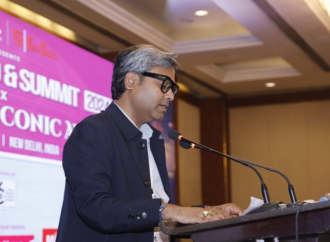Air Pollution Worsens Across Delhi After Diwali Celebrations As residents across the national capital region (NCR) celebrated Diwali with fireworks, Delhi’s air quality dropped sharply, pushing almost all parts of the city into the red zone on Monday night. According to data, 36 out of 38 AQI monitoring stations in Delhi recorded pollution levels ranging
Air Pollution Worsens Across Delhi After Diwali Celebrations
As residents across the national capital region (NCR) celebrated Diwali with fireworks, Delhi’s air quality dropped sharply, pushing almost all parts of the city into the red zone on Monday night.
According to data, 36 out of 38 AQI monitoring stations in Delhi recorded pollution levels ranging from “very poor” to “severe”, highlighting a major environmental concern following festive celebrations.
AQI Reaches ‘Very Poor’ Level, Some Areas Turn ‘Severe’
At 10 PM, Delhi’s overall Air Quality Index (AQI) stood at 344, falling under the “very poor” category. Four key stations reported “severe” air quality levels —
-
Dwarka (417)
-
Ashok Vihar (404)
-
Wazirpur (423)
-
Anand Vihar (404)
The readings were recorded by the Central Pollution Control Board (CPCB) using the SAMEER app, which tracks real-time air quality across India.
24-Hour Average AQI Remains Alarming
Delhi’s 24-hour average AQI, measured at 4 PM, was reported at 345, higher than 326 recorded a day earlier on Sunday.
By Monday afternoon, 31 monitoring stations reported “very poor” air quality, while three were already in the “severe” range. Experts warn that the situation is expected to worsen further on Tuesday and Wednesday, with the air likely slipping into the “severe” category citywide.
What the AQI Levels Mean
The CPCB classifies AQI as follows:
-
0–50: Good
-
51–100: Satisfactory
-
101–200: Moderate
-
201–300: Poor
-
301–400: Very Poor
-
401–500: Severe
An AQI above 400 indicates dangerous pollution levels that can seriously affect health, especially for children, the elderly, and those with respiratory conditions.
Sources of Pollution in Delhi
According to data from the Decision Support System (DSS), transport emissions contributed 15.6% of Delhi’s total pollution on Monday. Other major contributors, including industries, construction, and waste burning, made up 23.3% of the pollution share.
Experts note that weather conditions and stubble burning in nearby states also played a major role in worsening air quality after Diwali night.
Authorities Implement Emergency Measures
On Sunday, the Commission for Air Quality Management (CAQM) activated Stage II of the Graded Response Action Plan (GRAP) across Delhi-NCR.
The decision followed a review by the GRAP sub-committee and forecasts from the India Meteorological Department (IMD) and the Indian Institute of Tropical Meteorology (IITM), which warned of further pollution build-up due to calm winds and stagnant air.
Supreme Court Guidelines on Firecrackers
On October 15, the Supreme Court of India permitted the sale and bursting of green firecrackers in Delhi-NCR, but within limited hours —
-
6 AM to 7 PM and 8 PM to 10 PM on Diwali Eve and the festival day.
Despite these restrictions, several areas in the capital witnessed widespread firecracker use, contributing to the spike in pollution levels recorded hours later.
Experts Call for Long-Term Solutions
Environmental experts stress the need for sustainable solutions to combat post-Diwali pollution. They recommend stricter implementation of bans, promotion of eco-friendly celebrations, and public awareness campaigns to protect Delhi’s residents from the yearly toxic smog.











Leave a Comment
Your email address will not be published. Required fields are marked with *